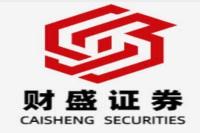Decoding the New Rules: A Deep Dive into China's Listing Company Value Management Guidelines
Meta Description: Navigating China's new Listing Company Value Management Guidelines (2023): A comprehensive guide for understanding, implementing, and complying with the regulations for market capitalization, stock price, and investor relations, including insights on stock buybacks, employee stock ownership plans (ESOPs), and more. This guide includes practical examples, FAQs, and expert analysis. Keywords: 上市公司市值管理, 股权激励, 破净, 估值提升, 投资者关系管理, 信息披露, 股份回购, 市净率, 市盈率
Imagine this: you're a CEO of a publicly listed company in China. Suddenly, the China Securities Regulatory Commission (CSRC) drops a bombshell – new, comprehensive guidelines on market value management. Your heart skips a beat. Are you compliant? Do you even know where to begin? Fear not! This isn't just another dry legal document; it's a roadmap to navigating the complexities of maintaining and boosting your company's value in the dynamic Chinese market. We'll unravel the intricacies of the CSRC's Listing Company Supervision Guideline No. 10—Market Value Management, providing clear, actionable steps, practical examples, and insider perspectives to help your company not just survive but thrive under these new regulations. This isn't just about legal compliance; it's about building a robust, investor-centric strategy that unlocks your company's true potential, fostering sustainable growth and maximizing shareholder returns. We'll cover everything from implementing effective stock buyback programs and designing compelling employee stock ownership plans to mastering investor relations and navigating the tricky waters of dealing with a prolonged period of below-net-asset-value (PNAV) stock prices. We'll demystify complex financial metrics, provide insights into effective communication strategies, and offer practical steps to build a resilient company, ready to weather any market storm. Get ready to transform your understanding of market value management and take your company to the next level!
Understanding the Core: Key Provisions of Guideline No. 10
The new guidelines, issued on November 15th, aren't just about boosting stock prices; they're fundamentally about improving the quality of listed companies. The CSRC emphasizes a holistic approach, focusing on sustainable growth, enhanced profitability, and transparent communication with investors. The cornerstone of this approach is improving operational efficiency and profitability. This isn't a quick fix; it's about building a fundamentally stronger business.
The guidelines highlight several key areas:
Long-Term Below-Net-Asset-Value (PNAV) Companies: A Focus on Value Enhancement Plans
This is a major focus. The guideline mandates that companies whose stock price has consistently traded below net asset value (PNAV) for 12 consecutive months must develop and disclose a detailed value enhancement plan. This isn't just lip service; the plan needs to be specific, actionable, and regularly reviewed. Think of it as a detailed business plan, but with a laser focus on improving market perception and ultimately, the stock price. Failure to do so could lead to regulatory scrutiny. The plan should outline specific, measurable, achievable, relevant, and time-bound (SMART) goals, showing investors a clear path to improved valuation. These companies are also required to provide a detailed explanation of their plan’s progress during their annual meetings.
Major Index Constituent Companies: Implementing Robust Market Value Management Systems
For companies included in major indices like the CSI 300 or the SSE 50, the guidelines are even more stringent. They're required to establish a formal market value management system, outlining responsibilities, monitoring mechanisms, and contingency plans for significant stock price drops. This includes clearly defining who is responsible for market value management, establishing clear roles for directors and senior management, and developing a robust early warning system to monitor key metrics such as market capitalization, Price-to-Earnings (P/E) ratio, and Price-to-Book (P/B) ratio, particularly in relation to industry averages. A detailed response plan addressing short-term, significant stock price declines is crucial. This proactive approach demonstrates to investors a commitment to proactively managing market perceptions and protecting shareholder value.
Leveraging Various Tools for Value Enhancement
The guidelines encourage the use of various tools to boost investor confidence and reflect the true value of the company. These include:
- Mergers and Acquisitions (M&A): Strategic acquisitions can enhance market position and profitability.
- Equity Incentives & ESOPs: Aligning management and employee incentives with company performance is key. Well-designed plans can motivate teams and attract top talent.
- Cash Dividends: Returning value to shareholders through regular dividends demonstrates a commitment to shareholder returns.
- Investor Relations (IR): Proactive and transparent communication with investors is vital for building trust and understanding.
- Information Disclosure: Accurate, timely, and complete information disclosure is paramount for maintaining market confidence.
- Share Repurchases: Buybacks can signal confidence in the company's future and reduce the number of outstanding shares, potentially increasing earnings per share.
Think of these tools as a toolbox – the best approach will depend on the specific company's circumstances and strategic goals.
Emphasis on Transparency and Ethical Conduct
The guidelines strongly emphasize ethical conduct and transparent communication. Manipulating information, engaging in insider trading, or making unrealistic promises are strictly prohibited. The CSRC is cracking down on unethical practices, aiming to create a fairer and more transparent market. This emphasis on ethical conduct reinforces the broader goal of creating a sustainable and trustworthy capital market.
Practical Implementation: Turning Guidelines into Action
The new regulations aren't just about compliance; they're a golden opportunity to refine your company’s strategy. Here’s how to translate these guidelines into a winning strategy:
-
Conduct a thorough self-assessment: Analyze your company's current practices against the new guidelines. Identify any gaps and develop a roadmap for improvement.
-
Develop a comprehensive value enhancement plan (if applicable): If your company is a long-term PNAV company, create a robust plan with clear, measurable goals, timelines, and responsible parties. Consult with financial experts and legal counsel to ensure compliance.
-
Build a strong Investor Relations (IR) function: Establish a dedicated IR team that actively engages with investors, providing regular updates and transparent communication.
-
Improve information disclosure practices: Ensure accurate, timely, and complete disclosure of all material information, using clear and concise language.
-
Implement a robust risk management system: Identify and mitigate potential risks that could negatively impact your company's value.
-
Stay informed of regulatory updates: The regulatory landscape is constantly evolving; stay updated on any changes and ensure your company remains compliant.
Navigating the Challenges: Addressing Potential Hurdles
Implementing these guidelines presents some challenges:
-
Resource Constraints: Developing and implementing a comprehensive market value management system requires resources and expertise. Smaller companies may need to seek external support.
-
Data Analysis Requirements: Effective monitoring requires robust data analysis capabilities. Investing in advanced analytical tools and training may be necessary.
-
Communication Challenges: Effectively communicating your company's value proposition to investors requires a clear and consistent communication strategy.
Frequently Asked Questions (FAQs)
Q1: What happens if my company fails to comply with the new guidelines?
A1: Non-compliance can lead to regulatory actions, including warnings, regulatory interviews, and potentially more severe penalties. The CSRC takes these guidelines seriously.
Q2: How can a long-term PNAV company develop a convincing value enhancement plan?
A2: It requires a deep dive into the business. Identify core strengths, weaknesses, opportunities, and threats (SWOT analysis). Determine realistic, achievable improvements in profitability and efficiency. Showcase your plan’s strategic direction clearly, justifying your plan through rigorous analysis and data.
Q3: What are the key metrics I need to monitor under these guidelines?
A3: Key metrics include market capitalization, P/E ratio, P/B ratio, revenue growth, profit margins, and industry benchmarks. Regularly monitor these metrics and compare them to industry averages.
Q4: How can I improve my company’s investor relations?
A4: Proactive communication is key. Organize investor calls, update your investor relations website regularly, and participate in industry conferences. Build relationships with key investors.
Q5: What constitutes "manipulating information" under these guidelines?
A5: This includes selectively releasing information, misleading statements, withholding crucial information, or disseminating false information to influence the market.
Q6: What resources are available to help companies comply with the new guidelines?
A6: Consult with legal and financial professionals specializing in this area. Numerous resources are available online and through professional organizations.
Conclusion: Embracing the Opportunity for Growth
The new Listing Company Value Management Guidelines are more than just regulations; they're an opportunity for Chinese listed companies to enhance their performance, transparency, and investor relations. By embracing these guidelines and implementing robust strategies, companies can build stronger, more resilient businesses, capable of thriving in the dynamic Chinese market. This is not just about complying with regulations; it's about building a business that delivers long-term value for its shareholders and stakeholders alike. Proactive planning and a commitment to transparency are the keys to success. Remember, a well-executed strategy will not only ensure compliance but also unlock your company's true potential for growth and long-term success.



